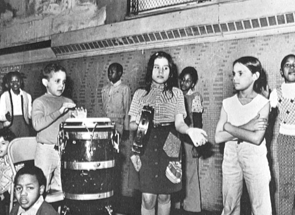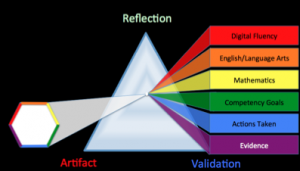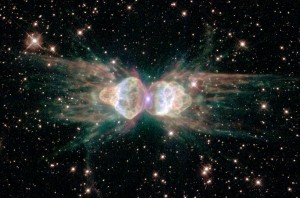I chose education as a profession for social justice reasons. Since my draft number for Vietnam came up 311, it meant I wouldn’t have to go. I decided to fight a different war, closer to home, addressing the gaps in opportunity that could only be healed through learning and in 1973 began teaching music in Newark NJ. The technology available to me back then was a reel-to-reel tape deck, a Gibson Melody Maker and my record collection at home. My students explored imaginary worlds of sound and feeling inspired by Bela Bartok, Harry Partch, and a host of African American composers who were largely unknown, along with exploring the rich gospel and jazz legacy that was renewed from generation to generation outside our classrooms walls, alive in their community. Needless to say, this was not part of the approved curriculum, but the central office objections to my practices were never adequately enforced to hold us back.
collection at home. My students explored imaginary worlds of sound and feeling inspired by Bela Bartok, Harry Partch, and a host of African American composers who were largely unknown, along with exploring the rich gospel and jazz legacy that was renewed from generation to generation outside our classrooms walls, alive in their community. Needless to say, this was not part of the approved curriculum, but the central office objections to my practices were never adequately enforced to hold us back.
We were not merely consumers of music, we were creators. As soon as my students could play three or four notes, we’d compose tunes and develop harmonies that allowed students to improvise over their creations. We put on community concerts, with 25-cent admission for kids and 50-cent admission for adults. After each concert, we raised enough money to go to a nearby pawnshop and purchase another horn, so another kid could join the band. We toured the state in m y VW bus, eventually performing on WBGO and getting a chance to record in a real studio, to see how real professionals created the music they heard on records and radio. What this taught me was that students will rise to and surpass whatever levels of expectation they are supported in experiencing directly.
y VW bus, eventually performing on WBGO and getting a chance to record in a real studio, to see how real professionals created the music they heard on records and radio. What this taught me was that students will rise to and surpass whatever levels of expectation they are supported in experiencing directly.
The first half of my four-decade love affair with learning was “pre-EdTech” and once the Internet came into my classroom in 1991, I joined an enthusiastic community of professional educators who shared a vision and commitment to extend the benefits we saw for our students to every student. My first NECC conference (1994 in Boston) felt like Woodstock. It was inconceivable that there were so many thousands of us who “got it” and connected to share our hard-won learnings. Every ISTE conference since then has provided a tribal gathering of innovators who support each other and welcome those who will continue these efforts after we leave the bandstand.
Because the tough lesson is this: two or three decades are not enough to bring our innovative practices into the mainstream of common practice. Ever more powerful hardware and software, ever more capable networks and ubiquitous wireless is not enough to bridge the gaps between “schooling” and real life. With the prevailing focus on reforming education, we are missing what’s most important: transforming education.
At its heart, education is about improvement. There is no point to anything we do that doesn’t lead to some aspect of improving our understandings, abilities or creations. The more cynical among us have pointed out that brick and mortar schools will exist as long as there is a need for daycare for working parents: everything else is cosmetic. This is why the idea of technology integration is bittersweet: we were completely integrated into a siloed model that co-opted transformative opportunities to its own ends. The era of accountability has simultaneously driven the national upgrade of connectivity in our schools while absorbing the classroom time that was previously available to early pioneers of digital learning (both students and teachers).
 Instead of education reform, as measured by increased test scores at state, district, school, classroom and student levels, we are now at a moment where we can advocate for the transformation that comes with personalization of learning, which in turn only becomes possible in technology rich settings.
Instead of education reform, as measured by increased test scores at state, district, school, classroom and student levels, we are now at a moment where we can advocate for the transformation that comes with personalization of learning, which in turn only becomes possible in technology rich settings.
True accountability means that we are serving the needs of learners, making sure that the time they spend, engaged with learning experiences we design, provide and make accessible, properly equip them with the dispositions and competencies they require to expand their opportunities for a lifetime. True accountability means maximizing the learning return on investment and wise use of scare resources (the most precious of which is time).
This is why for me ISTE means Innovative Systems Transforming Education. There is no other body of professionals from which these efforts will originate or be maintained. There is no better foundation from which to assure the sustainability of these efforts, which must necessarily span generations (since we are now entering our third generation awaiting the ubiquitous delivery on the promise from technology’s potentials). There is no worthier mission for educators to embrace, as we seek to liberate learning from locality: it shouldn’t matter where you live on this planet, you should be able to connect to the people, information and experiences you need to meet your current goals and prepare you for ever expanding goals.
Because the required transformation is to shift the focus from teaching to learning. In doing so, teachers as learners enter a bright new present, rather than focusing on some imagined future. We stand today on the shoulders of giants from prior generations (Dewey, Papert, Vygotsky…a nearly endless and inexhaustible roster) at a time when parents and employers increasingly demand that students gain the competencies tests can’t measure: critical thinking, collaboration, communication, and creativity. The new ISTE Standards will reveal the collective wisdom of thousands of educators who’ve shaped this latest refresh, which can’t come too soon to meet this growing demand.
I’ll conclude with insights from Jeff Goebel, a consultant I’ve seen organize groups around challenges previously considered intractable, in a process he calls “Possibility Thinking”. We must address both the worst and best outcomes people have before transformation becomes possible.
“Worst outcomes are feared future outcomes, often based on past experience, with a presently experienced emotion and physical reaction. When people believe them, they affect their perceptions, beliefs, values and strategies. They tend to be self-fulfilling prophecies when strongly held.
Best outcomes are hoped for future outcomes, sometimes not previously experienced, but intensely imagined, with a presently experienced emotional and physical response. When people believe them, they affect their perceptions, beliefs, values and strategies. They tend to be self-fulfilling prophecies when strongly held.
Possibility Thinking is an acknowledgement that both worst and best outcomes are present and inherent in each moment, up to and often after the event. This balanced view allows the movement toward desired outcomes.”
I invite you to join in the possibility thinking that considering ISTE as the potential home for Innovative Systems to Transform Education provides.
Ferdi Serim
NMSTE Executive Director
Santa Fe, NM 87508

